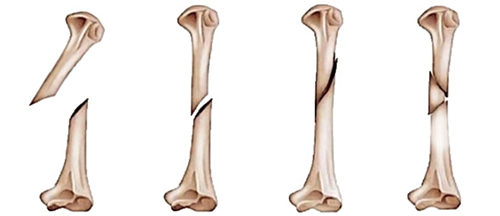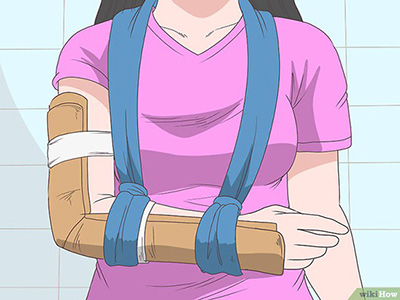Fracture
Before continuing, see the note on the use of this Guide.
Fracture or fissure:
475/5000 Fractures or fissures are caused by accidents, aggressions or sudden movements, the most common symptoms are: severe pain, inflammation, numbness, tingling and inability to move. In some cases it may be noted that the limb or joint is visibly out of place, or even the bone can tear the skin and be visible, in this case it will be important to control possible bleeding.
There are several types of bone injuries:

- Fissure (does not break)
- Oblique fracture
- Comminuted Fracture (several fragments)
- Spiral Fracture
- Composite or exposed fracture (bone tears tissues and skin)
Many times they cannot be detected with the naked eye unless it is an exposed fracture. Fractures require medical attention. As first aid it may be necessary to splint the damaged limb or part of the body in order to transport the person injured. Immobilization will help to prevent damage to nearby tissues.

Example of how to splint an arm using cardboard and make a sling with a bandage. To learn more about these resources, it is convenient to attend a first aid course.
First Aids
If you must transport an injured person to the medical services, you can splint the damaged limb using the materials at hand. It is best to use cardboard, or join several sheets of paper to form a rigid structure. With the cardboard or paper form a splint that can be fixed by garments, pieces of cloth, ribbons or belts; taking care not to press the tissues too much.Do not pin up the moorings on the wound.
In case of fractures in the fingers they can be splinted using a special splint that can be incorporated into your first aid kit.
Biomagnetism will only be used as a complementary tool to reduce inflammation and pain (it does not replace the use of medications) and subsequently as a complement to rehabilitation therapies.
Prevention
See the accident prevention section.